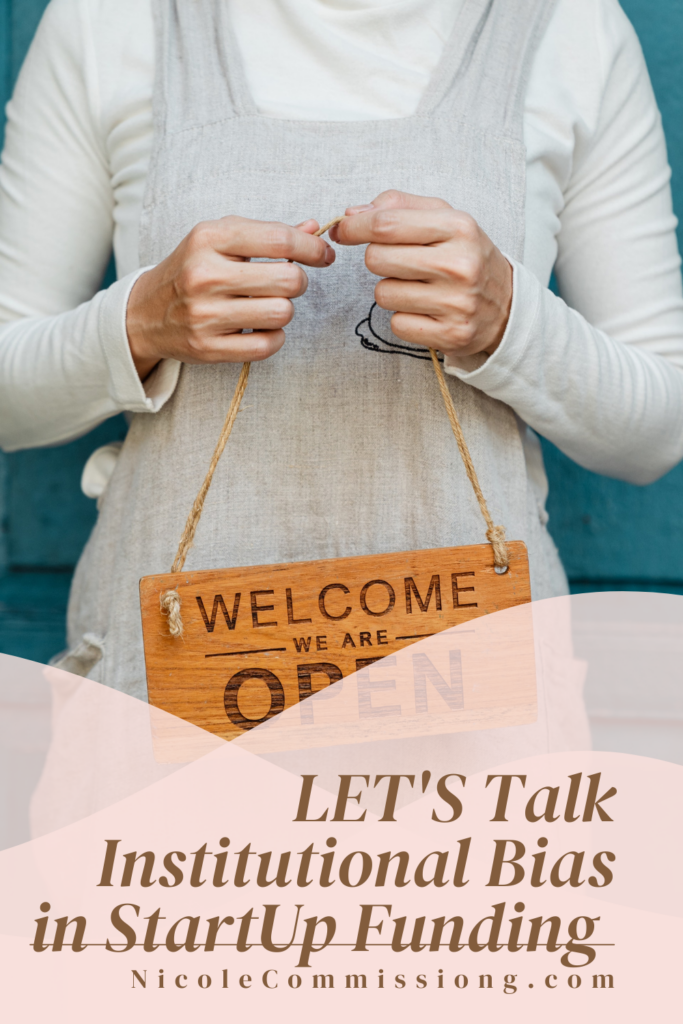
It is well known that a small disadvantaged businesses and startups do not get institutional capital as much as larger, male and non-People of Color-owned companies, but what are we going to do about that?
A lot of us bootstrap our business and run out of funds before we can achieve optimal success.
A recent press release I received encapsulated my thoughts and understanding of this dilemma. It is excerpted below and modified for clarity:
Because of institutional bias small to medium sized businesses (“SDB” ) have been blocked from success and in the meantime, venture capital (“VCs”) and private equity (“PEs”) firms are missing out on major financial gains.
Corporate America—especially legacy VC and PE firms—is losing millions of dollars in potential investment by not looking at small- and medium-sized business.
Corporate America has also shown a tendency to bypass smaller cap companies not based in large metropolitan areas.
There is a huge disconnect in the investment world because a lot of these SDBs do have great business plans, outstanding teams and are economically successful, but because they do not have the ability to capture an infusion of investment cash, they are being denied the opportunity to reach their potential.
Investing in small-market businesses creates goodwill for larger companies.

Reputation to a company is a currency just as valuable as cash.
Smaller companies can also adapt more easily and faster to new technologies, which in turn, helps them develop new markets faster than larger companies.
Bias in the Investment System
The inherent bias problem is significant, especially for minority- and female-run Small Minority-owned Businesses (“SMBs) seeking an infusion of cash:
- Male entrepreneurs are 60 percent more likely to get funding compared to females, even when both pitch the same business idea.
- In 2015, more than three-quarters of VC money in the US went to companies in Massachusetts, New York, and California.
- Only 5 percent went to female founders.
- Just one percent went to African Americans and Latinos.
- Funding to female entrepreneurs dropped from 2.7 percent in 2019 to 1.8 percent in 2020, and mixed-gender teams received just 11.1 percent in 2020, compared to 12.9 percent in 2019.
- The current VC/PE mentality has led to a blind spot that creates income inequity and holds back innovation.
- This outcome can be traced in part to a “good old boy” network philosophy which has put investment decisions into the hands of a handful of people in a few cities.

“The goal has to be to build sustainable pioneering companies that create jobs and elevate opportunities for underrepresented people,” says Paul Ford, founder and president of DS9 Capital. “America needs companies to play matchmaker between capital investors and underrepresented businesses, especially those owned by women and minorities.”
“These smaller companies may just need help overcoming a stumbling block. In reality, all they need is someone to believe in them,” he adds.
It can be a huge mistake for an investment firm to swoop in and take control.

That is not what SMBs want—or need.
The investment firms will make money off of the smaller firm via repayment of the investment capital, fee for services, profit-sharing, or whichever accords are agreed upon.
A fundamental shift is needed to bring fairness and balance to the private equity and venture capital system.
The old model is outdated, and it is time to give attention and opportunity to smaller businesses that represent the true fabric of America.
Financial innovators say it is time for investors to address the needs of the entire nation and provide balanced opportunity and equity across all business spectrums.
“A program that matches company founders with forward thinking investors is a win-win opportunity for all involved,” comments Ford, “We want to be the ‘ translator’ for small to medium companies who may not know the language of venture capital, private equity, expansion, applications, digitization and automation.”
“It’s time for SMBs to rise above this inequity created by Corporate America’s lack of vision.”
This analysis summarizes well the problem but I submit, we’ve got to get moving on credible solutions.
Let’s get committed to supporting changes that can be made by government, private philanthropy and private corporate interest to get smaller businesses properly funded.
We can do hard things.
xoxo
Nicole




